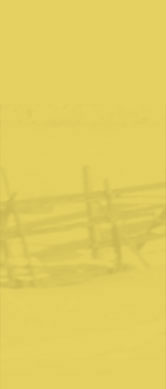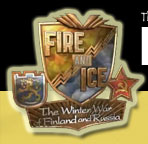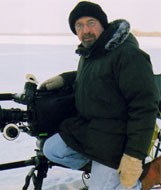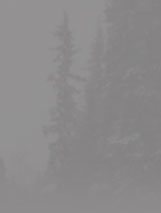

It Was
Supposed To Be a Quick Victory
Word / PDF
ESSAY
The Soviet Red Army that invaded Finland in 1939 was the largest military force in the world. It had a standing army of almost 2 million men with many million more in reserve. It had the industrial base to produce the world’s largest mechanized force including tanks and thousands of advanced bombers and fighter planes. On paper, the Red Army was the most powerful military force in the world. The Red Army was also confident after victories against the Japanese in 1938 and Poland in 1939. The campaign against Finland was expected to further demonstrate Soviet power.
In planning their campaign against Finland, Soviet military and political leaders were equally confident of a quick victory. They faced a tiny nation with a total field army of 300,000 soldiers, equipped with almost no armor, no modern air force and antiquated weapons, many dating back to the turn of the century. The Soviet failures ultimately encouraged Hitler in his plan to invade Russia.
The disastrous performance of the Soviet military in Finland, especially in November and December, led Soviet leaders to conduct a series of high-level meetings to assess the Red Army’s performance. As a consequence, Marshal Boris Shaposhnikov, the military professional who had predicted a lengthy and costly campaign – and whom the political officers, had ridiculed, was brought back. Commander Semyon Timoshenko, who had demonstrated his competence in the campaign against Poland and General Georgi Zhukov, who had led the campaign against the Japanese, were placed in command.
One of the areas not directly addressed was the effect on the Red Army on the political purges instigated by Stalin. During the 1930s anyone perceived as a political threat to Stalin’s leadership, almost the entire professional corps, including 90 percent of its generals and 80 percent of its colonels, were executed or imprisoned. A new political class of officers called commissars or politruks, were imposed on Army officers to enforce communist ideology. However, real power was given to the secret police force of the Commissariat of Home Affairs, later known as the NKVD. They reported directly to Stalin and could discipline or even execute officers at will.
The reforms conducted within the Red Army as a result of the Winter War made it a far more effective fighting force. Without the experience of the Winter War, the Red Army might not have been able to withstand the onslaught of the German blitzkrieg.
The example of the Finns in the Winter War demonstrated the importance of other factors beyond the size of forces and superior technology. The Winter War showed the effectiveness of small, mobile, highly motivated forces fighting a defensive war on their own territory. It demonstrated the importance of knowledge of terrain and weather conditions on military strategy.
The Soviets entered Finland expecting to be welcomed as liberators. They were unprepared for a long winter campaign. They did not expect the fierce resistance of a people united in defending their homeland against a foreign invader. The Nazi war machine would make many of the same mistakes in its invasion of the Soviet Union and in its war against Europe.
Finland’s military leader, Field Marshall Mannerheim, summed up the Winter War experience in his memoirs:
The one lesson above all that I wish to stamp on the consciousness of the next generation is this: fractiousness in one's own ranks is more deadly than the enemy's sword, and internal discord opens the door to the outside aggressor. The people of Finland have shown in two wars that a united nation, small though it may be, can develop unprecedented fighting power and thus withstand the most formidable ordeals that destiny brings.
By closing ranks at the moment of peril the people of Finland earned for themselves the right to continue to live their own independent lives within the family of free peoples. They did not waver in their efforts: they were made of sound and sturdy stuff. If we remain faithful to ourselves and if, at all moments of destiny, we cling unanimously and unfalteringly to the values which to this day have been the foundation of Finland's freedom – the faith inherited from our fathers, the love of our homeland and the determination and intrepid readiness to defend it – then the people of Finland can look to the future with the firmest of confidence."
LESSON PLAN
Grades 7-12
Time allotment 2-3 55 minute class periods
STANDARDS
World History Standards for Grades 5-12/ Era 8
National Center for History in the Schools
http://www.sscnet.ucla.edu/nchs/standards/worldera8.html
Standard 4B
The student understands the global scope, outcome and human costs
of the war and is therefore able to:
Explain the major turning points of the war, and describe the principal
theaters of conflict in Western Europe, Eastern Europe, the Soviet
Union, North Africa, Asia and the Pacific.
OVERVIEW
In this lesson, students will explore the major turning points of the war through diary entries. In addition, students will discuss the Winter War’s influence on later warfare in Western Europe and the Soviet Union.
OBJECTIVES
At the end of this lesson students will be able to:
Examine the morale of the Red Army and the Mannerheim Line through
the creation of personal diary entries
Discuss the motivating forces behind countries that defend their
own territory
VOCABULARY
Commisar
German
blitzkrieg
Timoshenko
NKVD
MATERIALS NEEDED:
Internet access
Paper and pencil
Classroom board
INTRODUCTORY ACTIVITY:
As students walk in the room, have the following two prompt questions on the board.
Many people are familiar with stories of
fighting between an underdog and a stronger power, such as “David and Goliath.” Can
you think of any similar instances where this has occurred either
in your own life or on a larger national or international scale?
How would you respond if you were an observer of this type of conflict?
Have you ever risked injury or even death in order to help someone,
or because it was a cause you believed in? If not, is there something
or someone that you would be willing to risk your life for? What
motivates that high level of commitment?
Ask students to spend approximately 20 minutes recording their responses to these questions in a journal. To promote class discussion, ask for volunteers to share their responses.
ACTIVITY
In the documentary, “Fire and Ice,” there are many accounts that have been taken from personal diaries of soldiers, both on the Soviet and Finnish fronts. Diaries play an important role in piecing together history. Historians have used diaries of key figures and common citizens to form a picture of a period in time. Students should review the personal memories of both the Mannerheim Line and the Red Army at http://mannerheim-line.com to get some insight into the thoughts and feelings of those who were actual soldiers in the Winter War.
Once the students have read through a small selection of memoirs, have them write three personal diary entries from either a Red Army soldier or a Finnish soldier. These diary entries must reflect different points of the 105 day Winter War. Use the topics below to stimulate thinking. Writers should speak in the first person and give the reader an understanding of what daily life may have been like on the front lines of the Winter War. When students have completed their diary entries, have them share them with the class in a monologue presentation. At the end of the presentation, ask the class how historians might interpret the diaries just written. Would the diaries have been written subjectively or objectively?
Amounts and types of food eaten
The weather
Successes and failures of the day
Friends lost in battle
Feelings of fatigue, illness
Feelings about the reasons for fighting the war
What is going on at home
Political philosophies
War strategies
Hopes for the outcome of the war
DISCUSSION QUESTIONS
How did the Winter War change the Red Army in its preparation for a war with Germany?
What were some of the motivating factors that caused a country as small as Finland to rise up against such a large military power?
Why was the Soviet Union so confident of a quick victory?
The Soviet Union was familiar with cold winters such as Finland’s. Why were they unable to prepare for the freezing temperatures in the same way the Finns were?
Did the Finns achieve their goal?
In what way did the Finns “win” the Winter War?
Why did the Soviets never claim more than 350 bodies of their dead from the Winter War?
EXTENSIONS
Have students read the poem “Fire and Ice” by Robert Frost. In what ways could this poem represent the Winter War? What doest Robert Frost indicate that fire and ice symbolize? Is this representative of the Soviet Union and Finland?
The documentary “Fire and Ice” opens
with a scene from the Winter War that is being re-enacted by a
group of present-day
Russian citizens. There are also organizations in America that re-enact
the Civil War. Why do present-day citizens re-enact wars of the past?
What is gained by doing this? Why does this film use Russian actors
to represent both the Finnish and the Russians? Why does Russia want
this war to be remembered?





